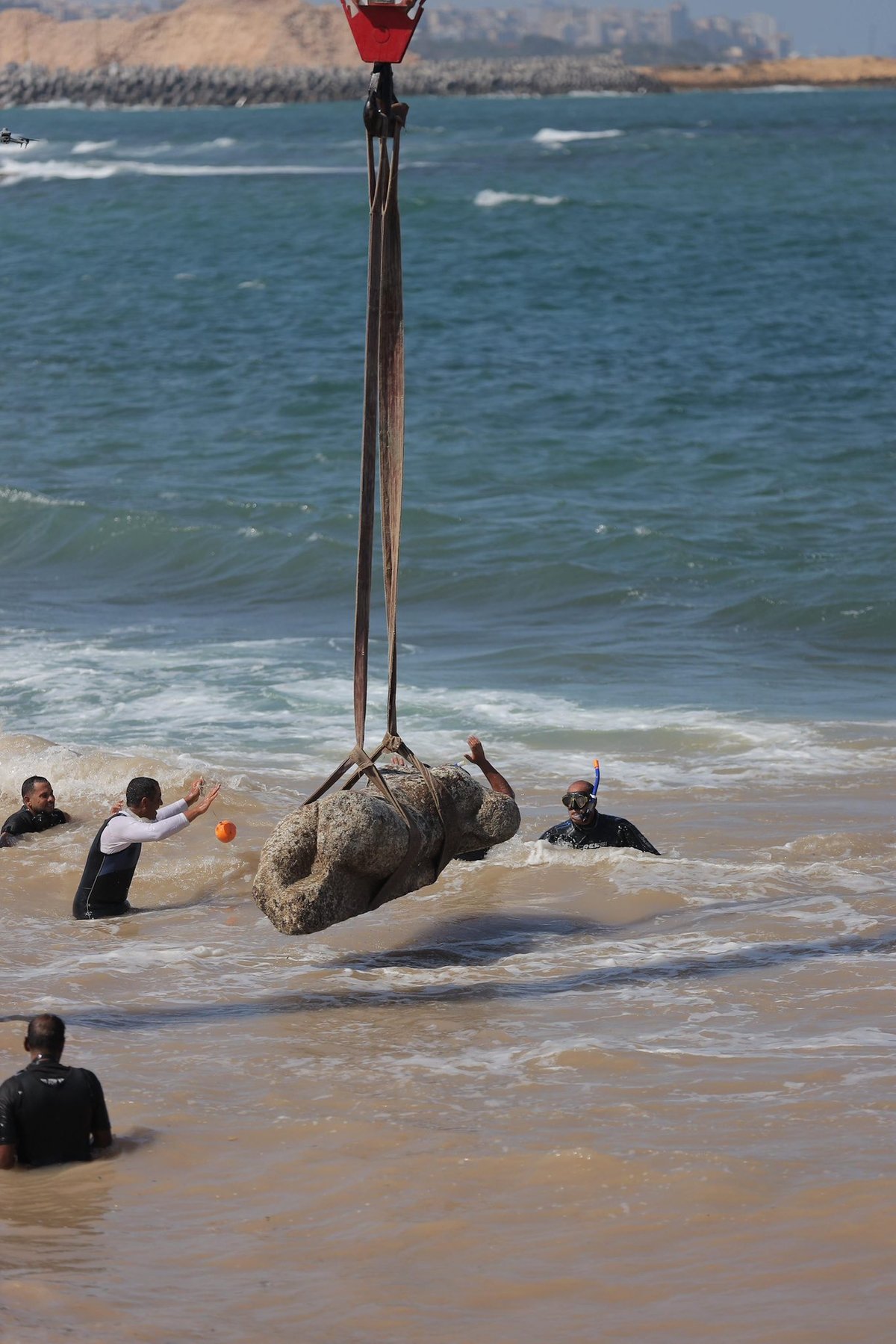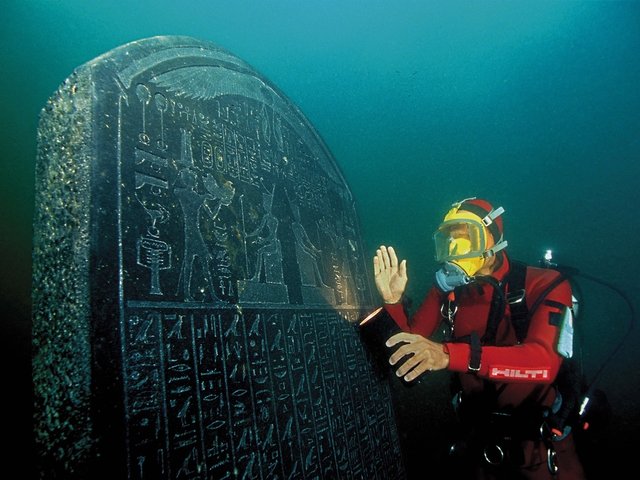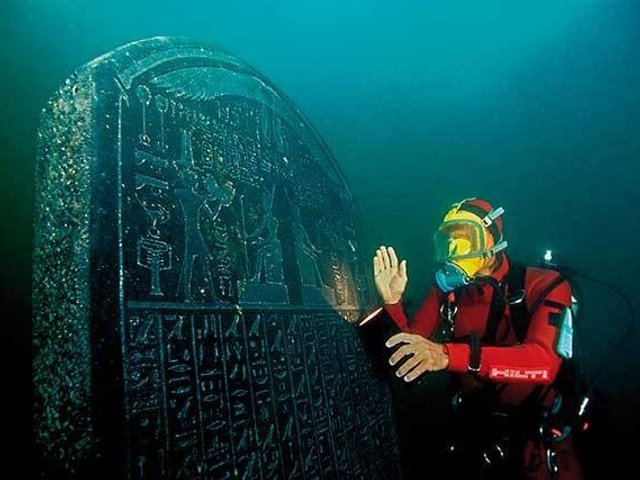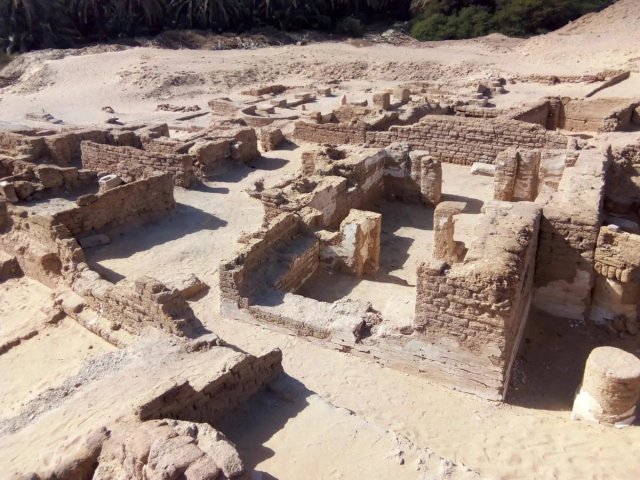Artefacts from the ancient, submerged city of Canopus off the coast of Alexandria have surfaced for the first time in 25 years. These include limestone buildings that may have been ancient temples, a dock and reservoirs for water and fish cultivation.
Canopus was the principal port in Egypt for Greek trade before the foundation of Alexandria, along with Naucratis and Heracleion, and its ruins lie near the modern Egyptian town of Abu Qir. It was an important city during the Ptolemaic dynasty, which ruled Egypt for nearly 300 years, and the Roman Empire, which governed for around 600 years. It was also an important part of early Christian history, and the town of Abu Qir (Arabic for “Father Cyrus”) contains the shrines of two martyrs. Fractured Christian-era masonry structures provide evidence of a massive earthquake.
The area was subject to several ancient disasters, including rising sea levels, earthquakes and tsunamis. Most of it was destroyed by liquefaction toward the end of the 2nd century BC. The remains of its eastern suburbs are submerged in the Mediterranean, while its western suburbs lie buried beneath Abu Qir.
According to the Egyptian Ministry of Antiquities, during a three-day event last week celebrating underwater heritage (19-21 August) several notable pieces were found, including a huge quartz statue of a sphinx holding the cartouches of King Ramses II and a white marble statue of a Roman nobleman.
In a speech at the event in what is now the modern port of Abu Qair, Sharif Fathi, the Egyptian minister of tourism and antiquities, praised the efforts made to bring “these unique artefacts from the depths of the Mediterranean into light”—including those of the Egyptian navy.
On 21 August, cranes slowly lifted statues from the depths while divers who helped retrieve them cheered from the shore.
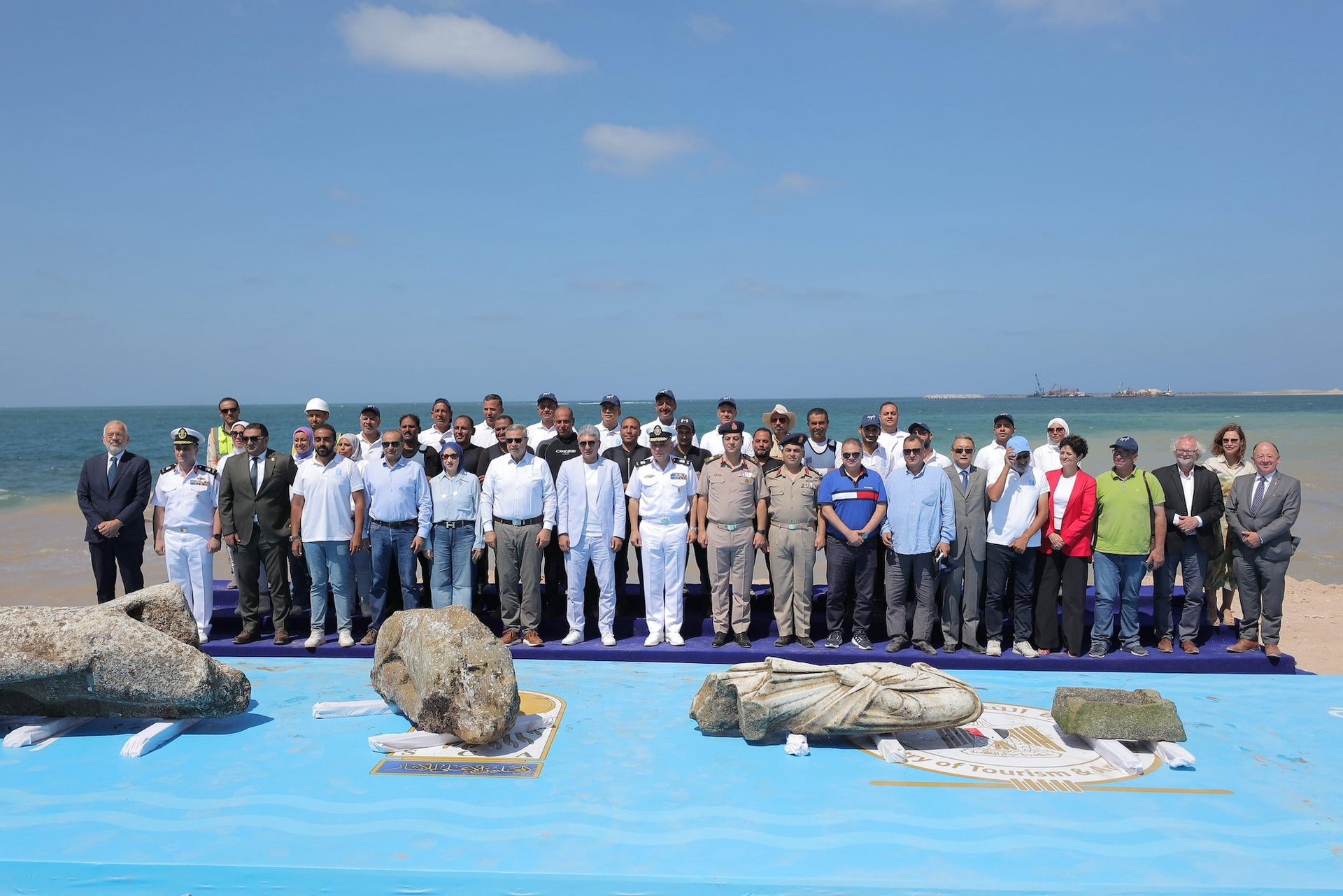
Archaeologists along with local, national and foreign officials celebrate the recovery of ancient artefacts from the former site of Canopus near Alexandria, Egypt Courtesy the Ministry of Tourism and Antiquities of Egypt
As a crowd of local officials and foreign diplomats looked on, Fathi added: “There’s a lot underwater, but what we’re able to bring up is limited, it’s only specific material according to strict criteria. The rest will remain part of our sunken heritage.”
The finds build on more than three decades of work by the European Institute for Underwater Archaeology (IEASM) in cooperation with the Ministry of Tourism and Antiquities, led by the French underwater archaeologist Franck Goddio. Through his extensive surveys and excavations, the undersea ruins were eventually identified as the lost city of Canopus.
Artefacts Goddio unearthed included the head of a four-to-five-metre-tall marble statue of the god Serapis and the remains of his temple, as well as an almost intact black granite statue of a Ptolemaic queen. Now, 86 of the artefacts from Canopus are on display in Secrets of the Sunken City, a new exhibition at the Alexandria National Museum and its library, which will remain on view for six months.
“The reason these ancient places are underwater now is because the coastline has changed since antiquity,” Stephen Harvey, an Egyptologist, tells The Art Newspaper. “Thonis and Heracleion are cities we only know about from underwater work by Goddio. But the coastline change is not part of recent processes. Temples, palaces and houses are now in the various bays—but were submerged millennia ago.”
The real story, he says, is that “the ongoing sea level rise will now threaten heritage on land, near the coast”. This includes the city of Alexandria itself, built by Alexander the Great in 331 BC.


